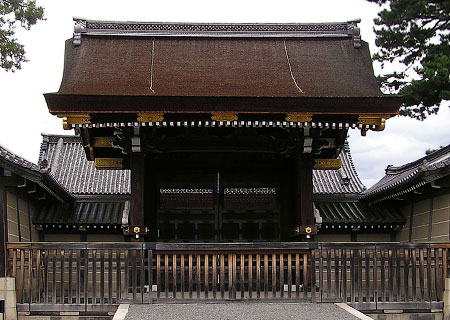|
||
 |
||
1@In temples and shrines, a lattice *koushi iq, barrier dividing the outer sanctuary *gejin Ow from the inner sanctuary *naijin ΰw or the front shrine *haiden qa, from the main Shinto hall *honden {a, to prevent general access. Sometimes only a low barrier, in other cases the full height of the room.
2@In shrines, temples, mansions, large farmhouses and town houses *machiya ¬Ζ, a low fence, portable in many cases but sometimes fixed with earthfast posts, which was used to divide off certain areas and prevent general access, both by animals (dogs and horses) and people. Also referred to as *komayose ξρΉ, particularly in relation to machiya.

Kyoto Gosho Kenreimon sδηε (Kyoto)
3@In vernacular houses *minka ―Ζ in Gifu prefecture, a board-covered edge zone along the short side of a rectangular hearth *ro F, known in other districts as okurabuchi δΐ.
4@In vernacular houses of the Yonezawa area of Yamagata prefecture, a lattice *koushi iq, approximately 60 - 90cm high, dropped into the small groove of a splice bar nailed onto the outside of pillars at either side of an entrance.
@
(C)2001 Japanese Architecture and Art Net Users System.@No reproduction or republication without written permission.
fΪΜeLXgEΚ^ECXgΘΗASΔΜRecΜ³f‘»E]ΪπΦΆά·B

